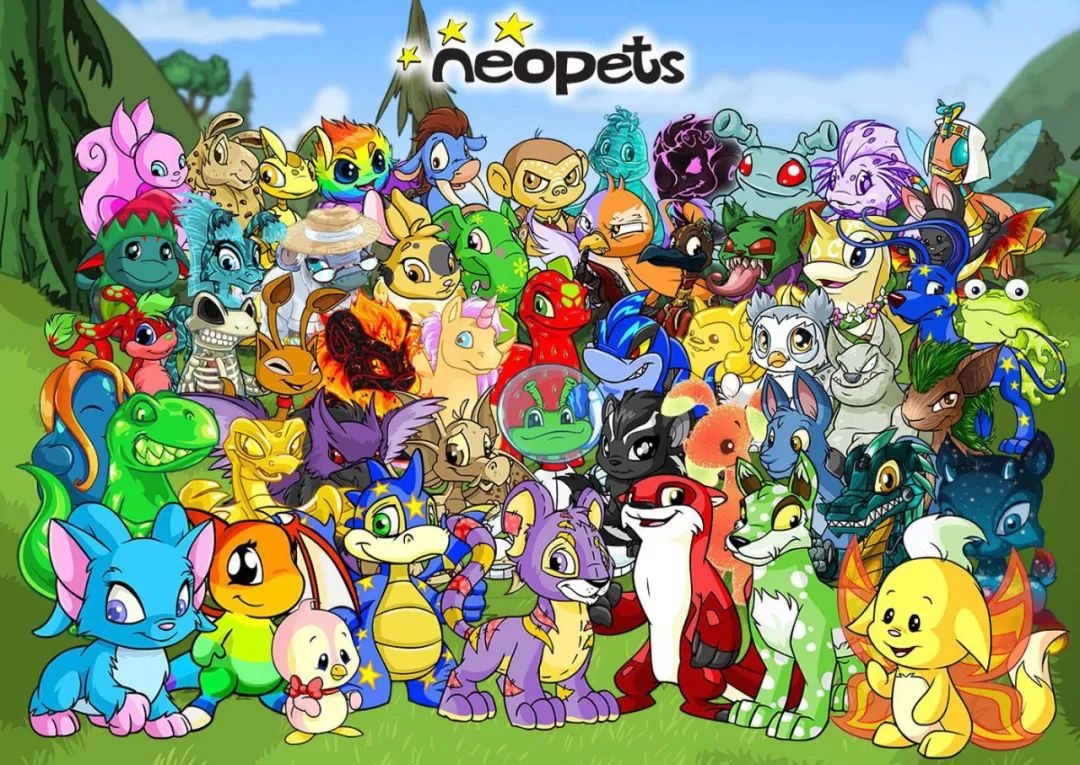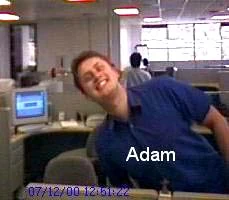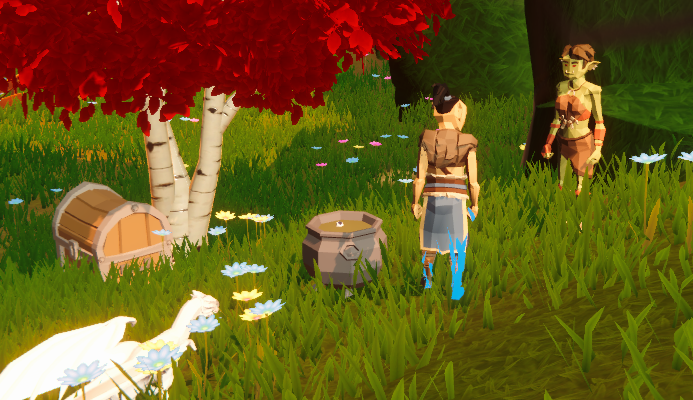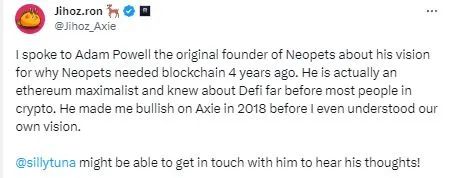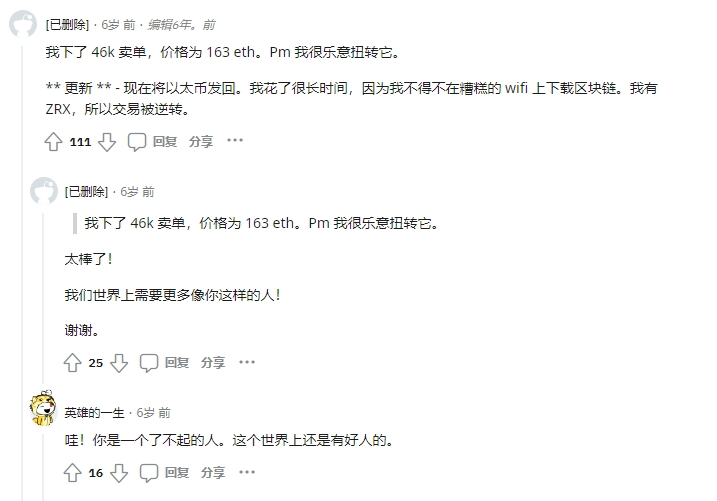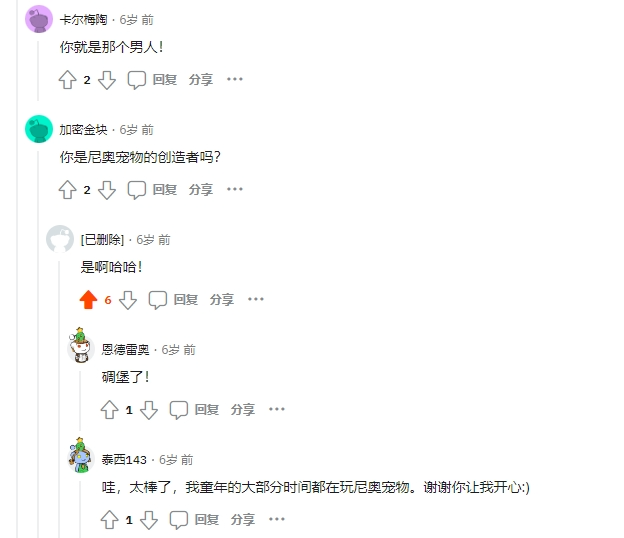Full Overview:
• Game content > Profit.
• Currently developing the Web3 game Dragginz, a blockchain game that combines the elements of "pet raising" and "open world." The goal is to attract players from around the world without requiring knowledge of encryption. The reverse Gas model of the Internet Computer blockchain allows players to play without paying Gas fees, making it imperceptible that the game is built on the blockchain.
• Dragginz will still be a free game, but there will be no sponsorships or advertisements. The only reason for players to stake tokens for DAO governance is because they believe in the future of the game and want to participate in its development.
• The game has not been released yet, but the governance token has already increased by 20 times.
• Hopes to achieve something that could not be achieved in "Neopets" through Dragginz.
In November 1999, a web-based virtual pet raising game called "Neopets" was launched. Players could nurture and take care of their cartoon pets, chat with them, and play games. They could also trade various game items using the in-game virtual currency "Neopoints."
At that time, the founders Adam Powell and Donna Williams were just students at the University of Nottingham. Their initial goal was simply to "keep college students entertained and possibly make some money through banner ads."
At that time, internet technology was just beginning to become popular, and there was relatively little competition in online games. The game was an immediate success, and through word of mouth, "Neopets" reached 600,000 daily players in less than a month. At its peak, the game had 140 million players and 5 billion page views per month.
Just a few months later, "Neopets" received significant investment. Despite the funding and team, Adam did not have an easy time. Although he believed that game content was more important than profit, the pressure to generate revenue forced the team to focus on inserting various sponsored advertisements into the game.
After leaving "Neopets" following its acquisition, Adam and his old partner Donna Williams founded the game studio Meteor Games in 2007, and subsequently released highly successful games such as "Island Paradise," "Warrior Legacy," and "Ranch Town." In particular, "Island Paradise" had over 400,000 daily active players at its peak.
After closing Meteor Games, Adam and Donna seemed to have fallen silent for a long time. However, it was only after a deep conversation with Donna that I learned they had been researching the Ethereum blockchain for a long time.
In 2020, with the popularity of blockchain games, Adam announced the development of the new game Dragginz. This is a blockchain game built on the Internet Computer (IC) blockchain. The game is described as "Neopets meets Minecraft," combining pet raising with an open world.
Although Dragginz did not achieve the same level of fame as Adam and "Neopets," the discussion in the IC community was sparked when the governance token SNS-1 surged from an initial price of 1 ICP to a historical high of 830 ICP, nearly a thousand-fold increase, and almost all community members are eagerly anticipating the release of the game, hoping it can rival the original "Neopets." (More on SNS-1 will be discussed later in the article.)
As DFINITY Foundation founder Dominic Williams said, "Dragginz is a large-scale multiplayer online game developed by the team behind 'Neopets.' 'Neopets' was the first large-scale multiplayer online game with nearly a billion users. This was absolutely revolutionary at the time. I believe Dragginz will also be very exciting. When the game officially enters the mainstream world, the total number of IC network users can quickly increase to millions."
Recently, I had the privilege of interviewing Donna Powell. Yes, the two who have known each other for 12 years entered into marriage in 2008. Now, let's explore the journey of Adam and Donna in "Neopets," as well as the story behind Dragginz.
Game Content > Profit, Considering Blockchain Games Since 2014
It can be said that Adam Powell had early exposure to blockchain, at least before 2017.
In the eyes of Jihoz, co-founder of Axie Infinity, Adam was an early ETH maximalist and had high hopes for the development of DeFi. In 2018, he even expressed his optimism for Axie to Jihoz.
In 2017, on the early DeFi protocol 0x's Reddit subforum, a user named TommyEconomics posted that due to a price error, his order was executed at a loss of 500 ETH. He hoped the counterparty would contact him and help reverse the mistake. Soon, a user named borovan replied, claiming to be one of the counterparties and willing to refund 163 ETH from the transaction to TommyEconomics.
It must be said that the crypto world is sometimes large, but sometimes small.
TommyEconomics, at the time, founded the public chain Energi, which focuses on trading security.
And the counterparty, borovan, was actually Adam Powell.
"You're that guy!"
"I spent most of my childhood playing Neopets. Thank you for making me happy!"
Hello, Donna, it's an honor to speak with you. Could you introduce us to the background of you and Adam, as well as the team members?
Adam started writing games at the age of 5. From writing children's game books, to developing MUD-type games (multi-user real-time virtual games, usually based on text descriptions), and then web-based games. During "Neopets," we also designed console games, board games, and collectible card games.
We enjoy creating entertainment that makes us feel good, which is why our games are suitable for families, fair, and not profit-driven.
We are collaborating with a studio composed of many former Meteor Games employees to develop Dragginz. Their addition brings a wide range of expertise, from developing real-time strategy game "Syndicate" at Bullfrog Productions to creating mobile games "Monopoly Go!" and "Word Game Go!"
All team members are avid gamers, and some of our favorite games include "Dungeon Keeper," "Carmageddon," "World of Warcraft," "Slime Rancher," "The Legend of Zelda: Ocarina of Time," and "Graveyard Keeper." I believe you will see shades of these games in Dragginz.
The player count of "Neopets" reached 140 million in early 2000, which is a surprising number. Can you tell us about your journey in developing and managing "Neopets"?
Adam and I co-created "Neopets" in 1999. Initially, the two of us served as developers, database engineers, game designers, writers, artists, graphic designers, and community managers until we raised funds to expand the team. After scaling up, Adam focused on development, while I focused on design, but we always collaborated on creative direction.
As you can imagine, in 1999, there were no cloud services, so we had to purchase, install, and manage servers ourselves. We encountered many technical limitations in the early development of "Neopets." Scalability was a nightmare, with frequent downtime and data loss. Whenever there was a problem, we had to drive to the data center to fix it. In contrast, I am grateful for Internet Computer now, as it is fully scalable, does not require data centers, and does not even need cloud services. Every component of the game can be stored on the blockchain.
However, the rapid growth of "Neopets" took us by surprise. I believe the reason for its success was that we updated the game content every day. We would set puzzles for players to solve, sometimes very complex ones that required players to compile code hidden in HTML pages to find the answers!
As the popularity of "Neopets" grew, the pressure to generate revenue also increased. There was a time when most of our employees were dedicated to finding sponsorships for the game, making it difficult to update the game content. This is one of the reasons why Adam and I are so opposed to putting profit above game content. It was a very stressful time for us, as we were essentially fighting with management to get more resources to develop the core content of the game!
Nevertheless, "Neopets" was not all bad; the community was great. We learned a lot and plan to build on that with Dragginz.
I heard that the inspiration for developing Dragginz came from "Neopets"?
Dragginz is actually our initial idea for "Neopets," but it evolved differently after actually building "Neopets." We also attempted to make this idea a reality at Meteor Games, but it still did not happen. This is our third attempt to create our dream game, as early as 2014 when we considered building it in Web3.
Could you provide a detailed introduction to the gameplay of Dragginz?
Dragginz is a free MMO game where everyone entering the game world will have a dragon egg. You can craft items to hatch and evolve your pets, then embark on adventures in the vast game world, or simply engage in trading.
The goal of Dragginz is to provide players with a variety of gameplay options. Depending on your interests, you might become the person with the strongest Dragginz, the most powerful spells, the most delicious recipes, and more. This is a virtual world, and we hope to give every player a sense of independent participation, rather than just following a standard upgrade path.
In the "Neopets" Reddit section, many old players are not optimistic about Dragginz because it includes NFT elements. How do you view this?
Many people outside the crypto industry see NFTs as just images, more specifically associated with fraud. However, in Dragginz, NFTs are different.
I'll give a few examples.
In the UK, there is an old-fashioned party game called Beetle Drive, where players take turns rolling dice and drawing parts of a beetle's body. As shown in the image below.
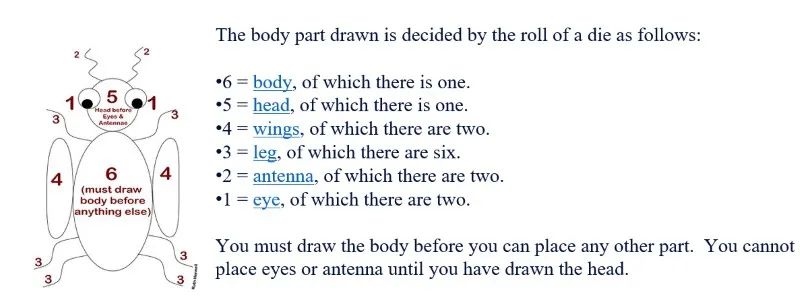
In our game, each pet is like a Beetle Drive, and each part is an NFT. You have to pay two Flow (the mana in Dragginz) to roll the dice once, once per hour, to draw a part. If you collect all the parts of a pet, you can unlock and use that pet.
Players can sell a specific part's NFT or sell a partially completed pet as an NFT. This is valuable to other players because it takes time and luck to draw the parts. Essentially, it's a way to pay for shortcuts.
Another example is in Dragginz, where you can create spells with multiple uses. A regular player can create a cloud that waters all plants for a week. If you're not interested in tending to a garden every day but still want special ingredients for cooking, crafting, and more, this might be the ideal choice.
If a player is truly dedicated to spellcrafting, they might create a cloud that lasts for a month. They can then turn it into an NFT and sell it to other players who need it.
Another spell players can cast is a mana battery. Players need to create Flow and then fill more Flow. These charged mana batteries can be sold as NFTs to other players who need them.
In Dragginz, the list of possible use cases for NFTs is constantly expanding…
You may notice that in these examples, as developers, we do not directly benefit from the sale of NFTs. Only the people who invest time and effort to create NFTs can profit from their sales. Our goal in designing Dragginz is not to make quick money from NFT sales. Instead, we see that if the community wants to utilize NFTs, they can become a part of a thriving in-game economy.
Tokenomics and Development of Dragginz
In May 2021, the Internet Computer mainnet was officially launched, and the native token ICP's price soared, enjoying great success. Although the token price was later manipulated and plummeted, the creator DFINITY Foundation chose to continue development according to the roadmap, rather than rug pulling.
The Service Nervous System (SNS) is an important step on the roadmap, where all ecosystem dApps can launch decentralized token sales on SNS, transitioning to a fully decentralized DAO governance model. The SNS-1 token was an experiment before the official launch of SNS, and all ICP holders could participate in the exchange, with 1 SNS-1 = 1 ICP. It can be said that SNS-1 is the first DAO in the IC ecosystem and the first fully on-chain DAO in history.
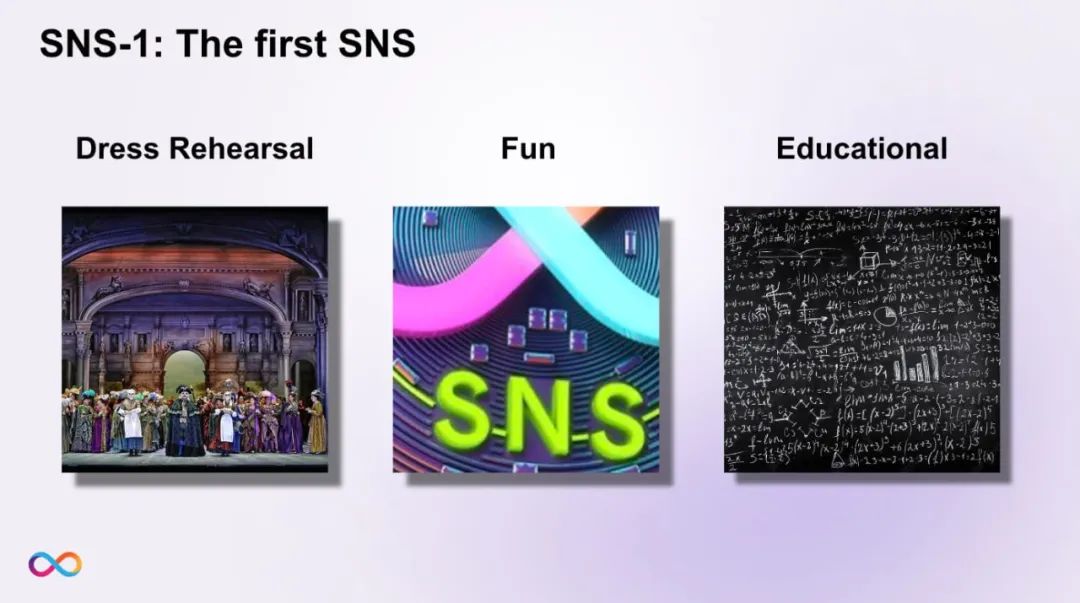
However, because it was just an experiment, it did not have a development direction. In the following months, community members proposed creating a DEX around SNS-1, integrating AI to empower it, and more.
Time came to June this year, and the SNS-1, which has been listed on various IC DEXs, suddenly surged after hovering in the 30-50 ICP price range for 4-5 months. A "whale" purchased a large amount of SNS-1 and staked it for 100 years without voting rewards. This "whale" is Adam. He accumulated enough SNS-1, granting voting power through any proposal. This means that Adam's purchase was for complete creative control over SNS-1, with the intention of making SNS-1 the governance token for Dragginz.
With reduced circulation and strong empowerment expectations, the price of SNS-1 soared from 47 ICP in early June to a historic high of 830 ICP (approximately $2400), nearly a 20-fold increase.
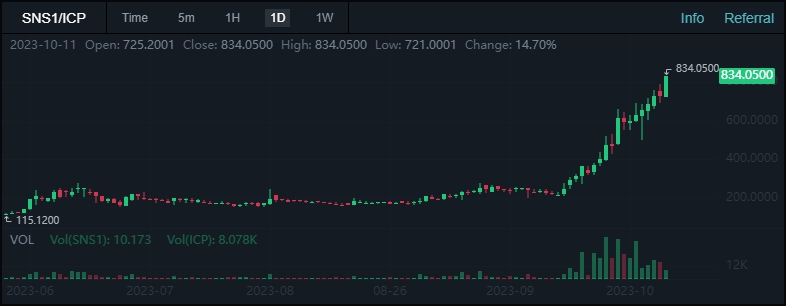
It is said that Dragginz began development as early as 2017. When did you start considering adopting blockchain, and why did you ultimately choose Internet Computer?
In 2014, when we started researching Ethereum, we were very impressed. The potential of this new technology was fascinating.
After a year or two of preparation, we encountered some obstacles. The main issue at the time was scalability, and the programming language we needed simply did not exist. After facing so many obstacles, development work basically came to a halt. Then in 2017, we met Dominic Williams, the founder of Internet Computer, who introduced us to IC, which sounded perfect for the game we wanted to build.
Since then, we have been closely following the progress of IC, and about a year ago, we believed it was mature enough to start our full-scale development work.
There really is no other blockchain that comes close to Internet Computer right now. In terms of efficiency, transaction speed, carbon footprint, security, and scalability, it is far ahead of other public chains. The reverse Gas model is also great for us because it means that regular players do not need to understand anything about paying Gas fees to play the game.
You acquired a lot of SNS-1 with the intention of making it the token for Dragginz. Why did you do this? Wouldn't it be a better choice to issue a new token on SNS?
We discussed with the DFINITY Foundation how to conduct our own decentralized token issuance for SNS, but the deeper we researched, the more we felt that this was not the right path for us. We did not want to raise funds for Dragginz; we only needed a token. Since SNS-1 already existed and was decentralized enough, we adopted it. Despite some limitations (for example, we cannot change the name of SNS-1 to DKP-Draggin Karma Points until the DFINITY Foundation adds a renaming feature to SNS), it mostly suited our needs.
Your team recently initiated a discussion on the DFINITY developer forum about changing the token economics of SNS-1 (DKP). Do you currently have a clear plan for this?
Yes, we did, but I cannot currently disclose any details about the token economics (according to our legal advisor). I can say that the discussion on the DFINITY developer forum has been very helpful, and we have recorded everyone's feedback. Hopefully, I can make a major announcement about this next week!
Note: While editing this article, Dragginz has announced changes to the token economics, as follows.
- After the DFINITY Foundation adds a renaming feature to SNS, the token name of SNS-1 will be changed to DKP.
- Since the total supply of SNS-1/DKP is only 10,000, it is often a small fraction like 0.00x when used in the game. Therefore, the team plans to adjust the total token supply to 10 billion on October 23 (the number of holders will also be increased by 100,000 times).
- SNS-1/DKP will not inflate. There will be no additional token minting as operating costs and development expenses for the development team, which will be supported by the team's sale of official items in the game (the premise of commercialization is that the game content must be good enough; if the game is not good enough, no one will want to buy anything).
- SNS-1/DKP will not have a deflation mechanism. The only slight deflation is to prevent harmful transactions, where a transaction fee of 0.001 DKP will be burned when a transaction occurs.
- Staking SNS-1/DKP to SNS has governance incentives, but not token rewards; it is a reward in some game mechanisms.
- The team will still retain 52% of the voting rights to have complete control over the game content, avoiding the fate experienced during "Neopets."
Apart from token economics, how is the development of Dragginz progressing? When do you expect it to go live?
Perhaps in the second half of 2024 or early 2025? The development is progressing smoothly at the moment, but we do not want to commit to a launch date.
We will conduct a very small-scale test at the end of this year, which might even be unfair to call an alpha, as it could raise people's expectations too high. It will be a very basic game loop and concept test, primarily to test scalability and initial user experience on a small scale. We do not want to create something that will slow down the development speed for a test, so it is essentially just a fragment.
The focus of Dragginz development is to cater to mainstream players
Dragginz will be fully managed by DAO. Can you provide a detailed explanation? Besides community governance, what other advantages do you think Dragginz has compared to other blockchain games?
DAO means that the community can make meaningful decisions. Holders of DKP (SNS-1) will be able to vote on the development roadmap, choosing which pets to add, which skins to add, which storylines to develop, and more.
Dragginz is a game that can be played for free, and the only reason to buy DKP is because you love the game and want to be involved in its development. There will never be any advertisements or sponsorships in the game. It is a self-contained game world.
I believe another significant advantage of Dragginz is the use of Internet Computer's Internet Identity system for login. While this is one of the barriers for mainstream players to enter the game, it is also the only place where players can notice that they are using a completely on-chain game. However, the security advantages of using Internet Identity make it worthwhile. With Internet Identity, your identity is completely private, and even our developers cannot access your personal information. We can only know that the computer identity has 100% proven that you are a specific ID.
As a successful Web2 game founder, developer, and designer, I believe you have grand plans for Dragginz. When the game successfully goes live, what plans do you have to attract mainstream players beyond the crypto community?
We hope that Dragginz can provide a seamless experience, where players may not even realize they are playing a blockchain game. We are indeed working hard to integrate Internet Identity login to make it look more like a part of our website. The DFINITY Foundation is also working to make Internet Identity more user-friendly.
We are more focused on creating a high-quality game that can attract players from all over the world without requiring crypto knowledge. We will promote Dragginz at mainstream gaming conventions and listen to feedback from our community. If there is anything that makes players hesitant, we will change it!
In 2021, the popularity of Play-to-Earn (P2E) has had an impact on traditional games, with a large influx of hot money, users, and new projects entering the blockchain gaming/GameFi space. However, with the arrival of the bear market, both development trends and user numbers are currently very low. How do you view the future development of this field?
I do believe that the shift of games to Web3 is a natural progression. So far, the best blockchain is Internet Computer. You cannot truly make a large-scale game using any other blockchain.
If attractive games are developed, mainstream players will naturally shift to Web3. Here, "attractive" must be high-quality games, not ones that seek quick profits through tokens or NFTs.
Web3 is still in its early stages, imagine this as the early days of the internet. At least for the Dragginz team, it certainly feels that way. We are entering a new era, and there are truly exciting things ahead!
Note:
The above projects and views should not be considered as investment advice. DYOR. According to the notice issued by the central bank and other departments on "Further Preventing and Dealing with the Risk of Speculation in Virtual Currency Trading," the content of this article is for information sharing only and does not promote or endorse any business and investment activities. Readers are advised to strictly comply with local laws and regulations and not engage in any illegal financial activities.
Due to the revision of the public account, articles are no longer posted regularly.
If "Baize Research Institute" has been helpful to you,
click "Like" and "Watching."
免责声明:本文章仅代表作者个人观点,不代表本平台的立场和观点。本文章仅供信息分享,不构成对任何人的任何投资建议。用户与作者之间的任何争议,与本平台无关。如网页中刊载的文章或图片涉及侵权,请提供相关的权利证明和身份证明发送邮件到support@aicoin.com,本平台相关工作人员将会进行核查。
